 Technology peripherals
Technology peripherals
 AI
AI
 ICLR 2024 Spotlight | Negative label mining facilitates CLIP-based out-of-distribution detection tasks
ICLR 2024 Spotlight | Negative label mining facilitates CLIP-based out-of-distribution detection tasks
ICLR 2024 Spotlight | Negative label mining facilitates CLIP-based out-of-distribution detection tasks
As machine learning models are increasingly used in open-world scenarios, how to effectively identify and process out-of-distribution (OOD) data has become an important research area. The presence of out-of-distribution data can lead to model overconfidence and incorrect predictions, which is particularly dangerous in safety-critical applications such as autonomous driving and medical diagnostics. Therefore, developing an effective OOD detection mechanism is crucial to improving the safety and reliability of the model in practical applications.
Traditional OOD detection methods mainly focus on a single pattern, especially image data, while ignoring other potentially useful information sources, such as text data. With the rise of visual-language models (VLMs), they have demonstrated strong performance in multi-modal learning scenarios, especially in tasks that require simultaneous understanding of images and related text descriptions. Existing OOD detection methods based on VLMs [3, 4, 5] only use the semantic information of ID tags, ignoring the powerful zero-sample capability of the VLMs model and the very broad semantic space that VLMs can interpret. Based on this, we believe that VLMs have huge untapped potential in OOD detection, especially that they can comprehensively utilize image and text information to improve detection results.
This article revolves around three questions:
1. Is the information of non-ID tags helpful for zero-sample OOD detection?
2. How to mine information that is beneficial to zero-sample OOD detection?
3. How to use the mined information for zero-sample OOD detection?
In this project, we propose an innovative approach called NegLabel that utilizes VLMs for OOD detection. The NegLabel method specifically introduces a "negative label" mechanism. These negative labels have significant semantic differences with known ID category labels. By analyzing and comparing the affinity and nature of the image and ID labels and negative labels, NegLabel can effectively distinguish distributions belonging to samples outside the model, thereby significantly enhancing the model's ability to identify OOD samples.
NegLabel has achieved superior performance in multiple zero-shot OOD detection benchmark tests. It can achieve 94.21% AUROC and 25.40% FPR95 on large-scale data sets such as ImageNet-1k. Compared with OOD detection methods based on VLMs, NegLabel not only does not require additional training processes, but also shows superior performance. In addition, NegLabel shows excellent versatility and robustness on different VLM architectures.
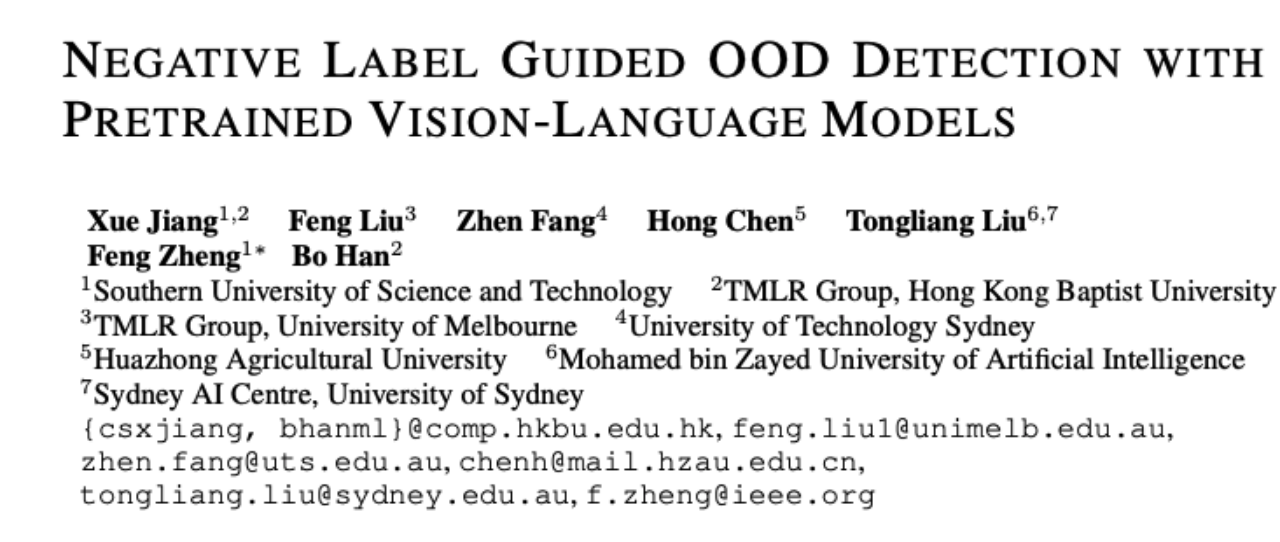
ØPaper link: https://arxiv.org/pdf/2403.20078.pdf
ØCode link: https://github.com/ tmlr-group/NegLabel
Next, we will briefly share with you our research results on the direction of out-of-distribution detection recently published at ICLR 2024.
Preliminary knowledge
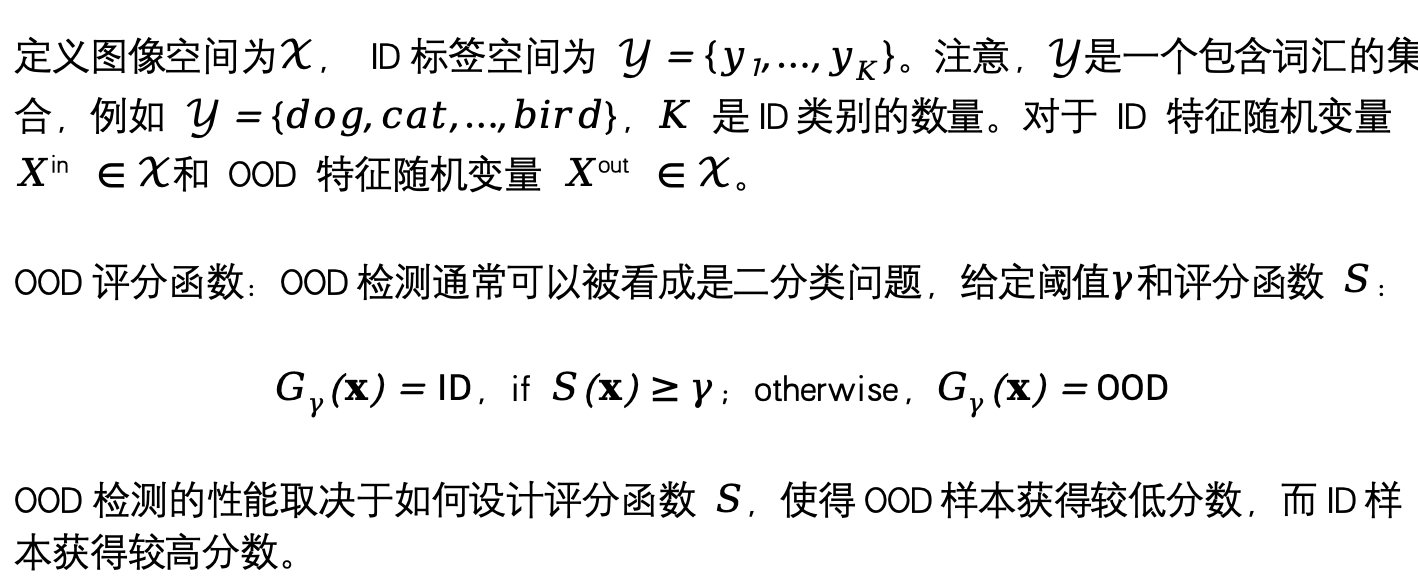
Method introduction
The core of NegLabel is the introduction of the "negative label" mechanism. These negative labels are related to known IDs Category labels have significant semantic differences. By analyzing and comparing the affinity of images with ID labels and negative labels, NegLabel can effectively distinguish samples that belong to out-of-distribution, thereby significantly enhancing the model's ability to identify OOD samples.

Figure 1. Overview of NegLabel
1. How to select a negative label?
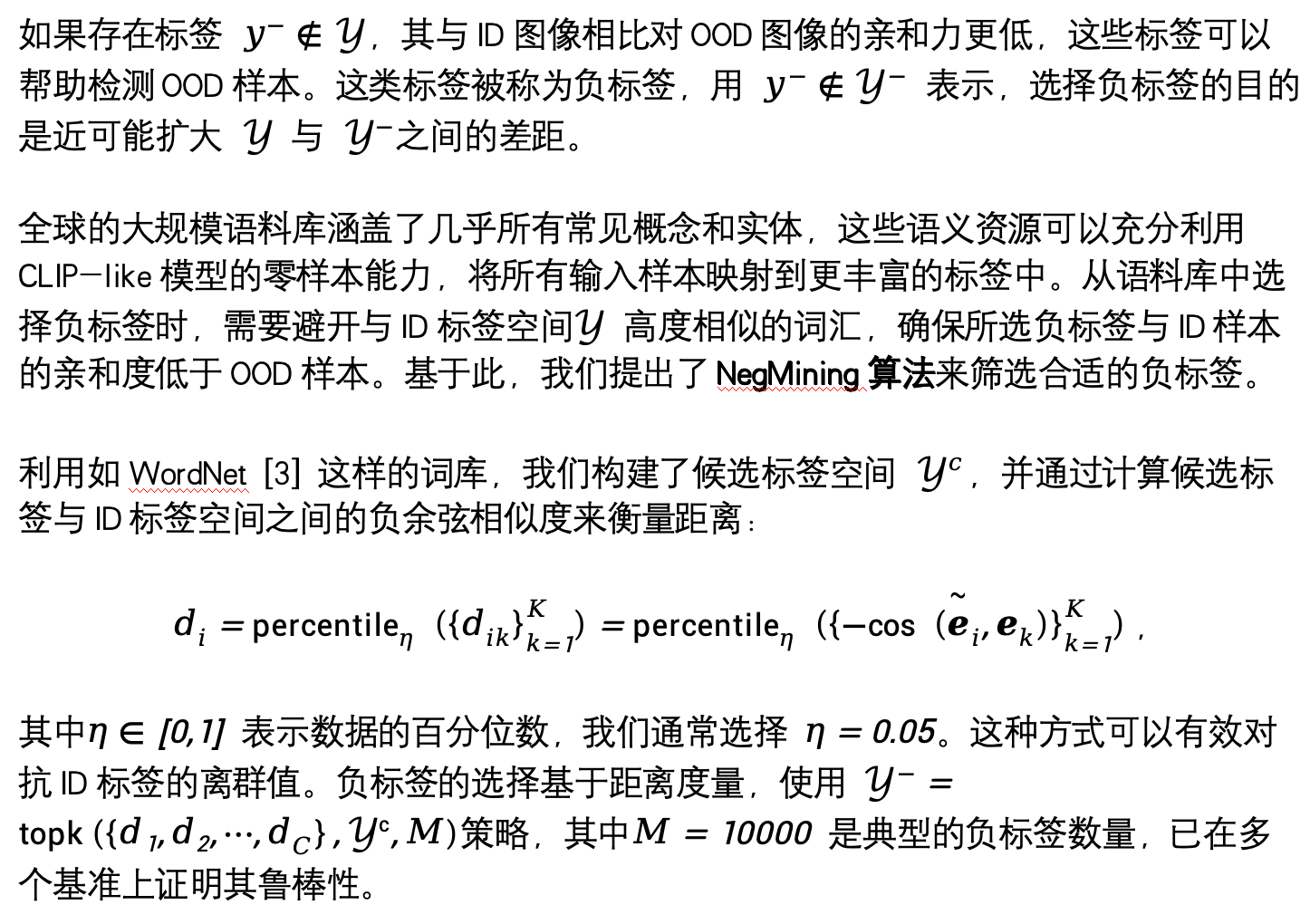
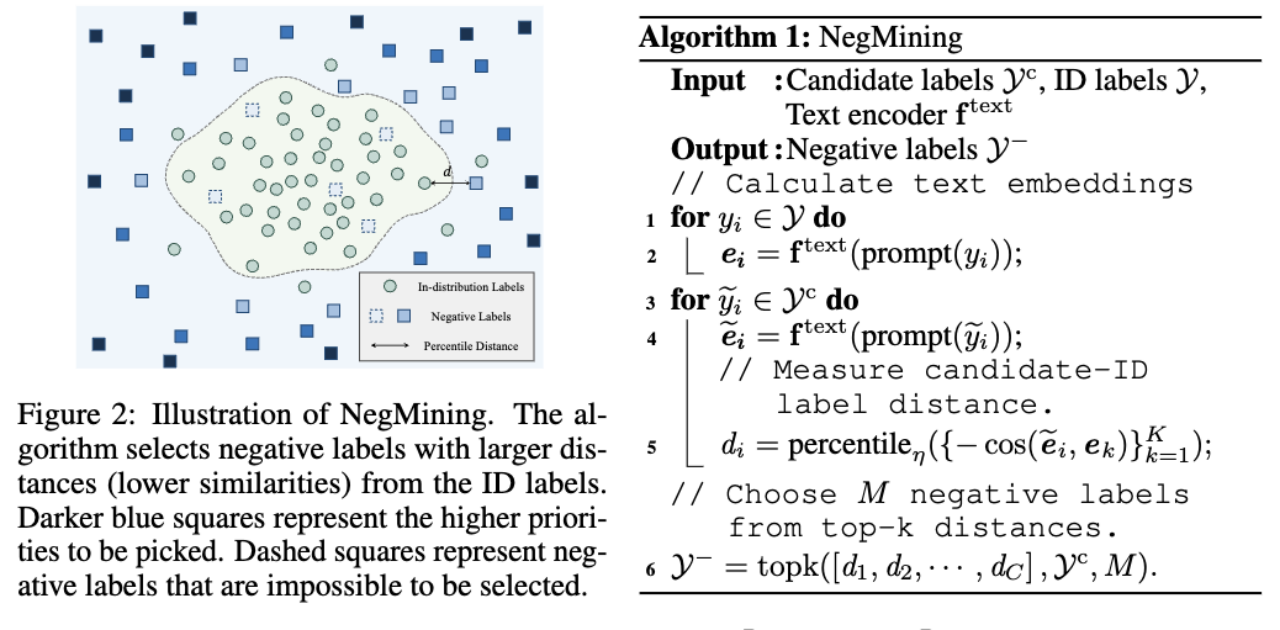
2. How to use negative labels for OOD detection?
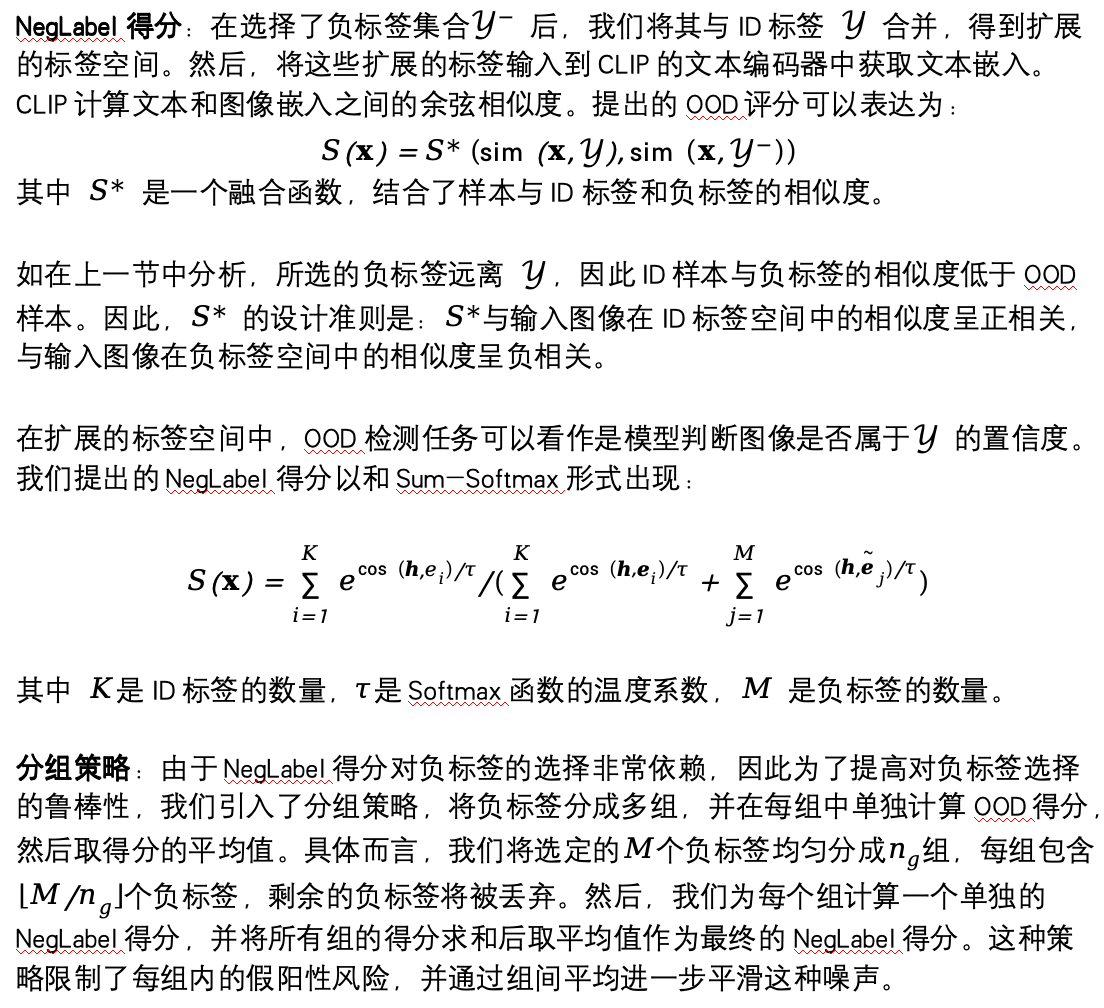
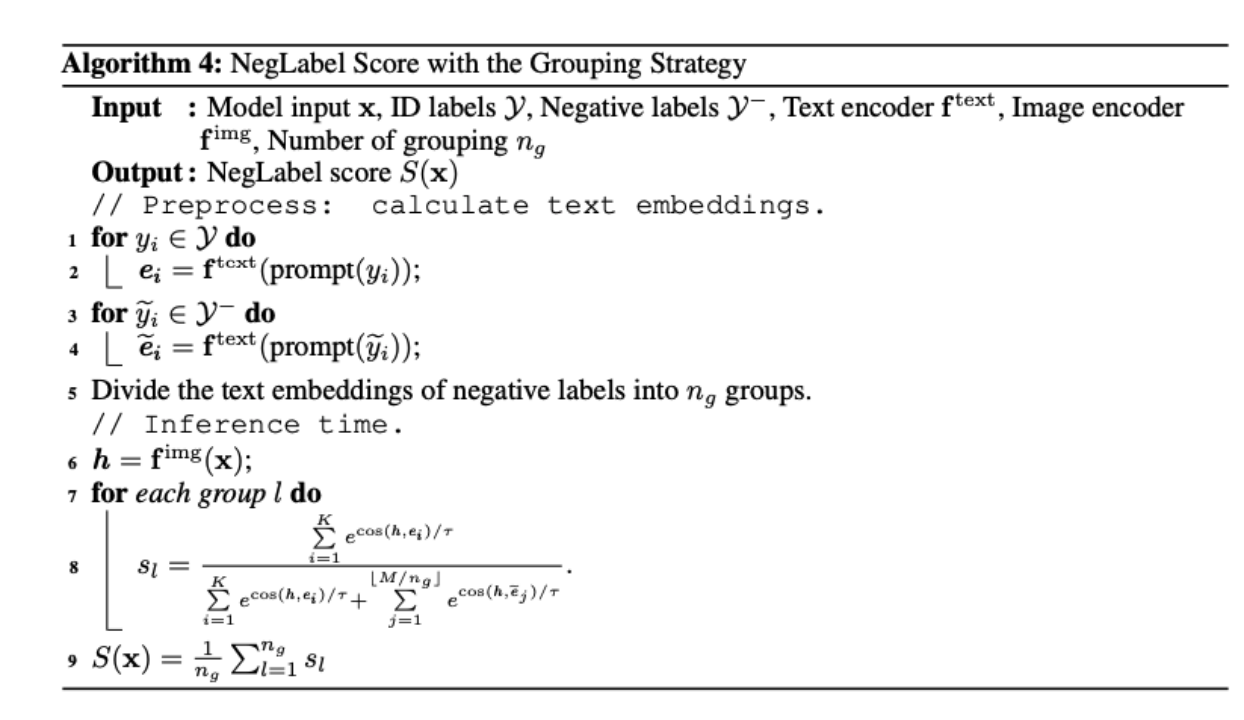
3. How to understand that negative samples can promote zero-sample OOD detection?

Experimental results
Our research work provides multi-dimensional experimental results to understand the performance and underlying mechanism of our proposed method.
As shown in the table below, compared with many benchmark methods and advanced methods with excellent performance, the method proposed in this article can achieve better out-of-distribution detection results on large-scale data sets (such as ImageNet). .
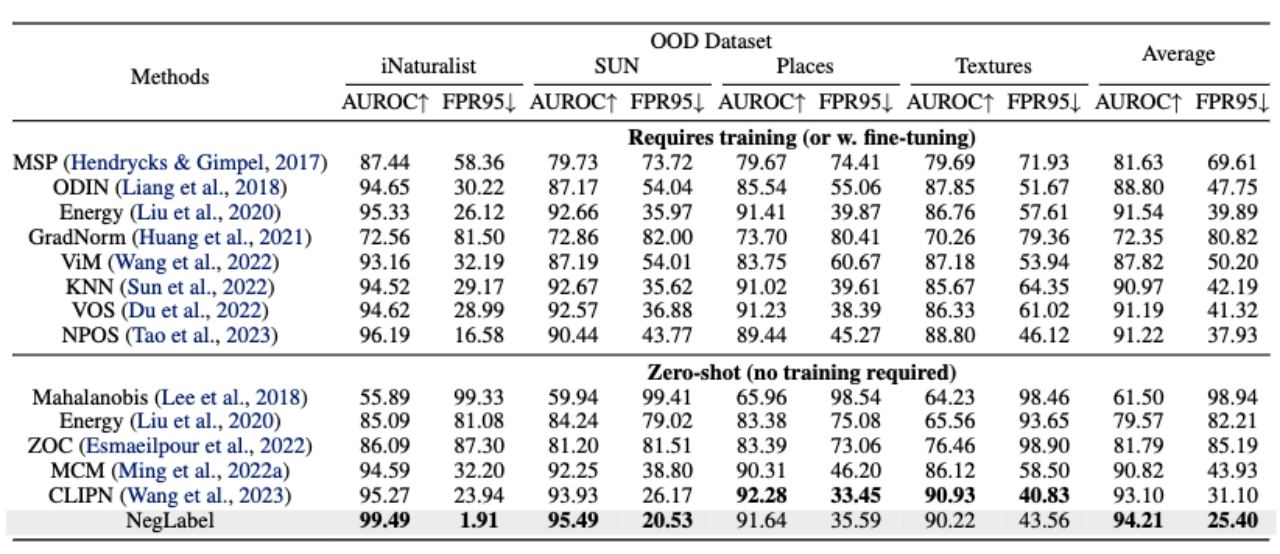
In addition, as shown in the table below, the method in this article has better robustness when ID data undergoes domain migration.

In the following two tables, we conducted ablation experiments on each module of NegLabel and the structure of VLMs. As can be seen from the table on the left, both the NegMining algorithm and the Grouping strategy can effectively improve the performance of OOD detection. The table on the right shows that the NegLabel algorithm we proposed has good adaptability to VLMs of different structures.

We also performed a visual analysis of the affinity of different input images for ID tags and negative tags. For more detailed experiments and results, please refer to the original article.
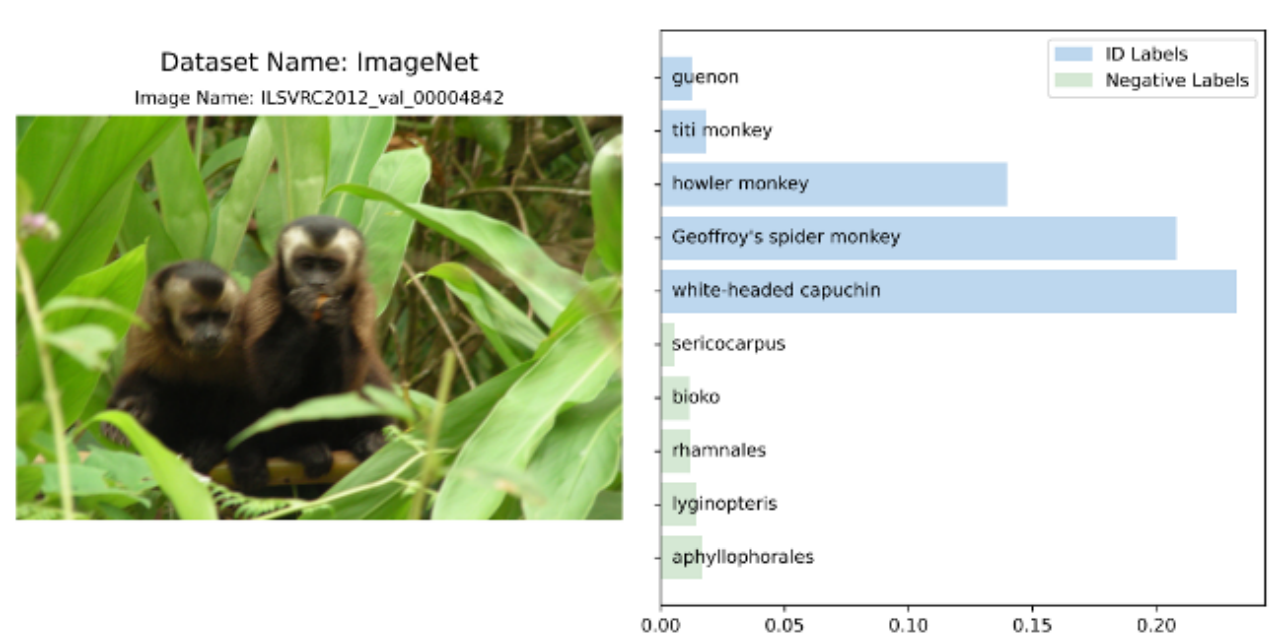
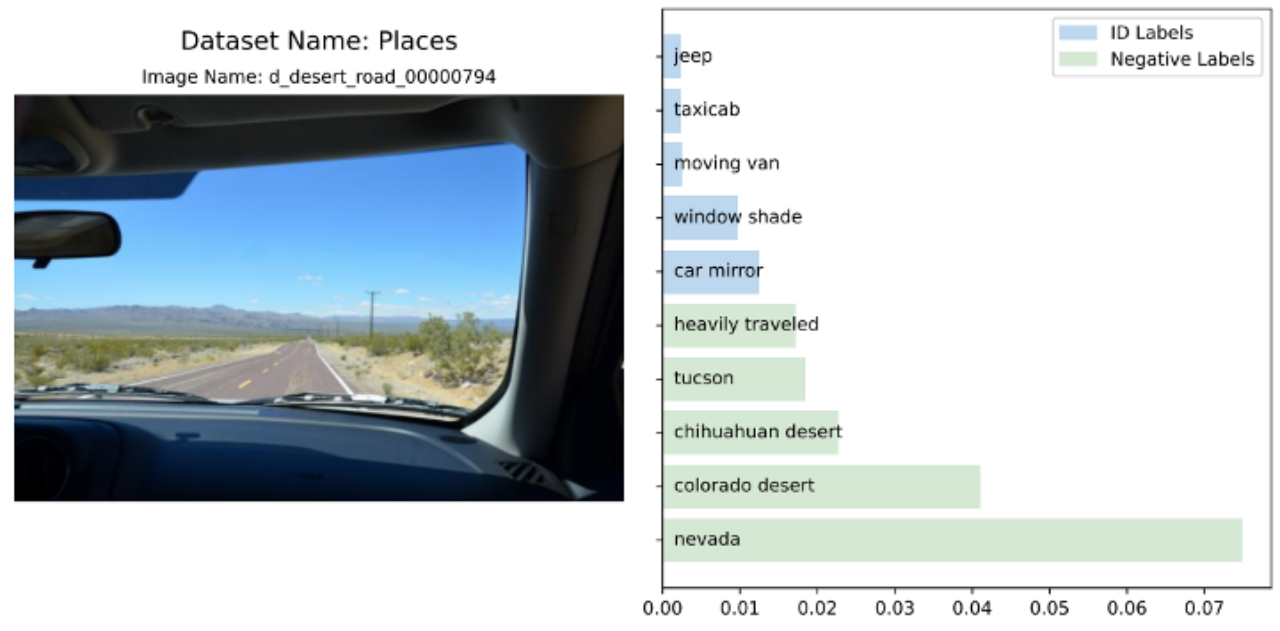
References
[1] Hendrycks, D. and Gimpel, K. A baseline for detecting misclassified and out-of-distribution examples in neural networks. In ICLR, 2017.
[2] Alec Radford, Jong Wook Kim, Chris Hallacy, Aditya Ramesh, Gabriel Goh, Sandhini Agarwal,Girish Sastry, Amanda Askell, Pamela Mishkin, Jack Clark, et al. Learning transferable visual models from natural language supervision. In ICML, 2021.
[3] Sepideh Esmaeilpour, Bing Liu, Eric Robertson, and Lei Shu. Zero-shot out-of -distribution detection based on the pre-trained model clip. In AAAI, 2022.
[4] Yifei Ming, Ziyang Cai, Jiuxiang Gu, Yiyou Sun, Wei Li, and Yixuan Li. Delving into out-ofdistribution detection with vision-language representations. In NeurIPS, 2022a.
[5] Hualiang Wang, Yi Li, Huifeng Yao, and Xiaomeng Li. Clipn for zero-shot ood detection: Teaching clip to say no. ICCV, 2023.
[6] Christiane Fellbaum. WordNet: An Electronic Lexical Database. Bradford Books, 1998.
The above is the detailed content of ICLR 2024 Spotlight | Negative label mining facilitates CLIP-based out-of-distribution detection tasks. For more information, please follow other related articles on the PHP Chinese website!

Hot AI Tools

Undresser.AI Undress
AI-powered app for creating realistic nude photos

AI Clothes Remover
Online AI tool for removing clothes from photos.

Undress AI Tool
Undress images for free

Clothoff.io
AI clothes remover

Video Face Swap
Swap faces in any video effortlessly with our completely free AI face swap tool!

Hot Article

Hot Tools

Notepad++7.3.1
Easy-to-use and free code editor

SublimeText3 Chinese version
Chinese version, very easy to use

Zend Studio 13.0.1
Powerful PHP integrated development environment

Dreamweaver CS6
Visual web development tools

SublimeText3 Mac version
God-level code editing software (SublimeText3)

Hot Topics
 1669
1669
 14
14
 1428
1428
 52
52
 1329
1329
 25
25
 1273
1273
 29
29
 1256
1256
 24
24
 How to download git projects to local
Apr 17, 2025 pm 04:36 PM
How to download git projects to local
Apr 17, 2025 pm 04:36 PM
To download projects locally via Git, follow these steps: Install Git. Navigate to the project directory. cloning the remote repository using the following command: git clone https://github.com/username/repository-name.git
 How to update code in git
Apr 17, 2025 pm 04:45 PM
How to update code in git
Apr 17, 2025 pm 04:45 PM
Steps to update git code: Check out code: git clone https://github.com/username/repo.git Get the latest changes: git fetch merge changes: git merge origin/master push changes (optional): git push origin master
 How to delete a repository by git
Apr 17, 2025 pm 04:03 PM
How to delete a repository by git
Apr 17, 2025 pm 04:03 PM
To delete a Git repository, follow these steps: Confirm the repository you want to delete. Local deletion of repository: Use the rm -rf command to delete its folder. Remotely delete a warehouse: Navigate to the warehouse settings, find the "Delete Warehouse" option, and confirm the operation.
 How to update local code in git
Apr 17, 2025 pm 04:48 PM
How to update local code in git
Apr 17, 2025 pm 04:48 PM
How to update local Git code? Use git fetch to pull the latest changes from the remote repository. Merge remote changes to the local branch using git merge origin/<remote branch name>. Resolve conflicts arising from mergers. Use git commit -m "Merge branch <Remote branch name>" to submit merge changes and apply updates.
 How to solve the efficient search problem in PHP projects? Typesense helps you achieve it!
Apr 17, 2025 pm 08:15 PM
How to solve the efficient search problem in PHP projects? Typesense helps you achieve it!
Apr 17, 2025 pm 08:15 PM
When developing an e-commerce website, I encountered a difficult problem: How to achieve efficient search functions in large amounts of product data? Traditional database searches are inefficient and have poor user experience. After some research, I discovered the search engine Typesense and solved this problem through its official PHP client typesense/typesense-php, which greatly improved the search performance.
 How to use git commit
Apr 17, 2025 pm 03:57 PM
How to use git commit
Apr 17, 2025 pm 03:57 PM
Git Commit is a command that records file changes to a Git repository to save a snapshot of the current state of the project. How to use it is as follows: Add changes to the temporary storage area Write a concise and informative submission message to save and exit the submission message to complete the submission optionally: Add a signature for the submission Use git log to view the submission content
 How to merge code in git
Apr 17, 2025 pm 04:39 PM
How to merge code in git
Apr 17, 2025 pm 04:39 PM
Git code merge process: Pull the latest changes to avoid conflicts. Switch to the branch you want to merge. Initiate a merge, specifying the branch to merge. Resolve merge conflicts (if any). Staging and commit merge, providing commit message.
 What to do if the git download is not active
Apr 17, 2025 pm 04:54 PM
What to do if the git download is not active
Apr 17, 2025 pm 04:54 PM
Resolve: When Git download speed is slow, you can take the following steps: Check the network connection and try to switch the connection method. Optimize Git configuration: Increase the POST buffer size (git config --global http.postBuffer 524288000), and reduce the low-speed limit (git config --global http.lowSpeedLimit 1000). Use a Git proxy (such as git-proxy or git-lfs-proxy). Try using a different Git client (such as Sourcetree or Github Desktop). Check for fire protection



